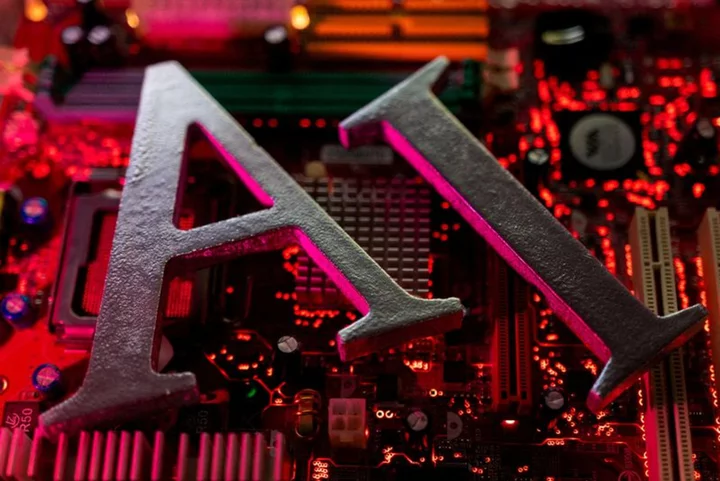
Italy's privacy regulator looks into online data gathering to train AI
MILAN Italy's data protection authority has kicked-off a fact-finding investigation into the practice of gathering large amounts of
1970-01-01 08:00

US Labor Board Files a Complaint Against Mozilla for Refusing to Hire Apple Activist
When Cher Scarlett began speaking up about labor issues at Apple Inc., she knew she was at risk
1970-01-01 08:00

ICBC partners wary to resume trading with bank after cyberattack - Bloomberg News
Industrial and Commercial Bank of China (ICBC) has been unable to convince some market participants that it is
1970-01-01 08:00

Inside the Coups and Concessions That Brought Altman Back to OpenAI
The braintrust that turned OpenAI into the world’s best-known artificial intelligence startup huddled at Sam Altman’s home in
1970-01-01 08:00

Nissan to make electric versions of Qashqai, Juke in Britain -Sky News
LONDON Japanese carmaker Nissan Motor Co will announce on Friday that it will build the electric versions of
1970-01-01 08:00

Analysis-AI poster child Altman back at OpenAI, may have fewer checks on power
By Aditya Soni Sam Altman's return as OpenAI's chief executive will strengthen his grip on the startup and
1970-01-01 08:00

OpenAI Engineers Earning $800,000 a Year Turn Rare Skillset Into Leverage
OpenAI reinstated Chief Executive Officer Sam Altman after hundreds of workers threatened to quit over the ChatGPT creator's
1970-01-01 08:00

BT Boosted by UK Chancellor’s Boasts of Historic Tax Cut
Shares in BT Group Plc rose as a cut to taxes on investments announced by UK Chancellor of
1970-01-01 08:00

Hulu for $1, Max for $3: Streaming Services Slash Prices This Black Friday
Big media companies have been raising the prices of their streaming services this year to reduces the losses
1970-01-01 08:00

Genesis sues Gemini over $689 million in customer withdrawals
By Dietrich Knauth NEW YORK Crypto lender Genesis Global on Tuesday sued partner Gemini Trust Co, seeking to
1970-01-01 08:00

Nasa receives signal from 10 million miles away in space
Nasa has received a signal from a spacecraft 10 million miles away. The message, delivered using a distant laser, could “transform” communications with spacecraft, the space agency has said. It represents a successful test of Nasa’s Deep Space Optical Communications or DSOC experiment. It is also the first time that data has been successfully relayed through a laser from further away than the Moon – and marks a rapid increase, at more than 40 times the distance from the lunar surface. At the moment, almost all communications with craft in deep space is achieved through radio signals, sent and received from vast antennas on Earth. They have proven reliable but their bandwidth is limited, meaning that it is slow or impossible to send large files such as high-definition photos and videos. Nasa’s work on DSOC is an attempt to use optical communications through lasers instead. The technology could improve data rates by as much as 100 times, the space agency says. The first attempt to test the technology beyond the Moon left the Earth on Nasa’s Psyche mission, which left Earth last month on a mission to study a distant asteroid. The spacecraft is carrying a laser transceiver than can both send and receive laser signals in near-infrared. Last week, that equipment locked onto a Nasa laser beacon in California. Nasa says that “first light” breakthrough is one part of a host of experiments that they hope will prove the laser technology can work. “Achieving first light is one of many critical DSOC milestones in the coming months, paving the way toward higher-data-rate communications capable of sending scientific information, high-definition imagery, and streaming video in support of humanity’s next giant leap: sending humans to Mars,” said Trudy Kortes, director of technology demonstrations for the Space Technology Mission Directorate at Nasa Headquarters in Washington. Nasa likens the precision pointing of the laser signal to trying to point a light at a coin from a mile away. What’s more, the laser and its target are constantly moving: in the 20 minutes it will take for the light to travel to Earth from Psyche’s furthest distance, both the planet and the spacecraft will have moved significantly. The team will now work to refine the systems that ensure the spacecraft is pointing its lasers in the right direction. When that happens, Nasa will try an experiment to demonstrate that the spacecraft is able to maintain high-bandwidth data transfer at different distances from Earth. It will do so by breaking the data into bits that can be encoded in the photons of light sent by the spacecraft. That light then arrives at the telescope on Earth and can be reassembled into images or other important data that will be sent by spacecraft – and perhaps humans – in the future. Read More SpaceX hints next Starship launch attempt could be soon SpaceX to launch world’s biggest rocket again after first attempt ended in explosion Nasa spots collection of shocking materials on distant planet
1970-01-01 08:00

Two Crypto Platforms Linked to Justin Sun Hit by Hacker Attacks
Two projects connected to digital-asset entrepreneur Justin Sun, including the crypto exchange HTX, where hacked in separate exploits
1970-01-01 08:00
